Have you ever dreamed of opening your own gym? Picturing a space buzzing with fitness enthusiasts, perfectly lined up weight racks, and state-of-the-art cardio machines may sound exciting. But one can’t help but wonder, what exactly does it take to turn this vision into reality? Understanding gym equipment regulations and knowing what equipment your gym should have are essential steps in the process.
In essence, you need a detailed plan, sufficient capital, a sound business model, the right qualifications and licenses, gym management software, and a loyal community to open a successful gym.
Fear not, though, for the answers you seek are within your reach. This article will provide you with a comprehensive, step-by-step guide on what you need to open a gym.
So, let’s dive in!
Table of Contents
1. Business Plan
Every dream begins with a vision, and bringing that vision to life requires a robust plan. Laying out a solid gym business plan, along with brainstorming creative gym names, helps in envisioning the steps needed to make the dream of owning a gym a reality. A well-structured business plan will cover all aspects of the operation. Let’s delve into key components of an effective business plan.
Executive Summary
This section outlines the gym’s purpose and goals, especially when considering buying a gym business. It succinctly captures the essence of the business, detailing the organizational structure and providing a brief overview of the company’s strategic approach. I believe in a gym where everyone can reach their fitness goals.
Market Analysis
It’s crucial to understand the market and the competitive landscape. Comprehensive market analysis includes researching competitors, identifying the target audience, and understanding their needs. This knowledge helps in tailoring services to meet the demands of the market.
Services and Pricing
Here, the types of services the gym will offer and their pricing is detailed. For example, will it focus on traditional gym equipment, or include specialized fitness programs like yoga or CrossFit? The pricing strategy must balance affordability for customers and profitability for the business.
Marketing Strategy
The marketing strategy outlines how to promote the gym to attract and retain customers. It may include plans for social media campaigns, local advertising, partnership promotions, and more. As a firm believer in spreading health and fitness, I can’t wait to see our community grow through these strategies.
Financial Projections
Financial projections are essential for planning and securing funding. They include expected revenue, operating costs, break-even analysis, and profitability forecasts. Regular updates of financial projections help in evaluating business performance and adjusting strategies as needed.
2. Funds
The financial aspect of opening a gym is as important as the business plan itself. Many aspiring gym owners often wonder, “how hard is it to open a gym?“. It takes significant resources to secure a location, purchase equipment, hire staff, and manage operational costs. Below are some key areas to consider when securing funds for a gym.

Personal Savings
Using personal savings can be a viable option to fund a gym. It’s an accessible and direct way to invest in the venture, and it eliminates the need for repayment or sharing profits. I value self-reliance and see personal savings as a testament to one’s commitment to their dream.
Business Loans
Banks and financial institutions offer business loans to finance entrepreneurial ventures. It is important to have a solid business plan and good credit history to secure such loans.
Investors
Investors can provide a significant boost to the available capital for starting a gym. They can be individuals or companies who see potential in the gym and are willing to invest in its success. Opening a gym can feel like running a marathon, but with the right plan and funding in place, the finish line can be closer than it seems.
Crowdfunding
Crowdfunding involves raising small amounts of money from a large number of people, typically via the internet. It’s a great way to generate funds and create public awareness about the gym.
Government Grants
Some governments offer grants to businesses. While the competition can be stiff, it’s worth exploring as it doesn’t require repayment. Personally, I trust exploring every opportunity to fuel our mission of wellness.
3. Space
Opening a gym is a process that involves careful consideration of various factors, one of which is space. The location and size of the facility can significantly impact the business’ success. Here are the elements to focus on:
Location
The location of the gym, especially if you’re planning to open a gym in your area, influences the number and type of clients. Choosing a place with easy access, visibility, and proximity to the target market is critical. Bretton Woods highted the importance of gym location as it can actually effect the frequency of visits, longer commutes to the gym are associated with fewer visits

Area Size
The size of the gym should accommodate all necessary equipment, locker rooms, and, if desired, special areas like a yoga studio or cycling room. It should also factor in space for future expansion.
Layout
A well-planned layout helps in easy navigation through different sections of the gym. It ensures safety, promotes efficient use of space, and enhances clients’ experience. An example of a well-structured gym layout is the popular franchise, Planet Fitness, known for its roomy and organized floor plan.
Flooring
The right flooring is essential for both safety and equipment durability. High-impact flooring, such as rubber or foam, can absorb the shock of heavy weights and prevent injuries. Safety first – a principle I hold dear to every gym-goer’s experience.
Ambiance
The ambiance, including lighting and color scheme, can motivate gym goers. Certain colors could enhance physical performance. From personal experience, making informed decisions regarding gym space pays off in the long run, implementing a well-thought-out layout and design has enhanced the overall gym experience for members and staff.
4. Gym Equipment
Another integral part of opening a gym is the equipment. The selection, arrangement, and maintenance of gym equipment are crucial for a safe and effective workout environment. This section delves into the important aspects that a gym owners should take into account.
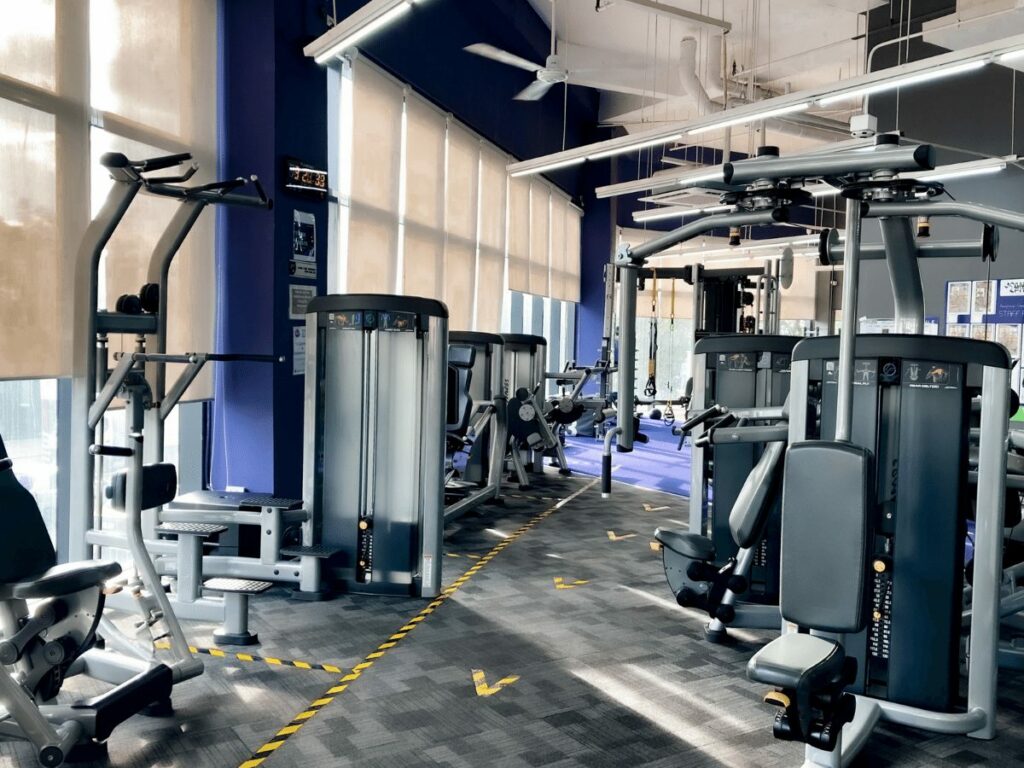
Types of Equipment
Depending on the target clientele, the gym should have a mix of cardio machines, strength training equipment, and functional fitness accessories. A comprehensive setup caters to varied workout preferences and fitness goals. As a fitness enthusiast myself, I understand the need for variety in equipment to cater to everyone’s unique fitness journey.
Quality
Investing in high-quality, durable equipment, including considering options to import gym equipment from China, ensures safety and reduces the frequency and cost of repairs and replacements. Yanre Fitness is a reputable manufacturer, providing robust and professional-grade gym equipment that stands the test of time and rigorous usage, ensuring an excellent return on investment.
Maintenance
Regular maintenance extends the life of the equipment and keeps it safe for use. Maintenance includes cleaning, checking for wear and tear, and timely repairs. As a leading manufacturer of gym equipment, Yanre Fitness emphasizes on the importance of regular maintenance for the longevity and safety of their premium quality equipment.
Financing Options
Buying gym equipment, and considering where do gyms buy their equipment, is a significant expense. Consider various financing options, such as leasing or buying used equipment, to manage the initial cost. As someone who values smart spending, I advocate for exploring different financing options to maximize our resources.
5. Licenses and Permits
Navigating the sea of permits and licenses, which are among the important things to know before opening a gym, can be a challenging endeavor. It’s a crucial stage that ensures legal compliance, allowing smooth operations without undue legal risks. Here are some essential licenses and permits needed to sail this ship without capsizing:
Business License
Every gym owner must secure a business license to operate within their jurisdiction. This license is a legal requirement and serves as proof of the gym’s adherence to local business laws and regulations. Without it, the operation can face hefty fines, or worse, forced closure.
Building Permit
Securing a building permit, which is a step to consider when wondering how long does it take to build a gym, is necessary when planning for renovations or construction within the gym facility. This permit certifies that the proposed changes adhere to local building codes, ensuring the safety and welfare of gym-goers. In personal endeavors, securing a building permit proved essential when creating a new functional fitness zone in the gym facility.
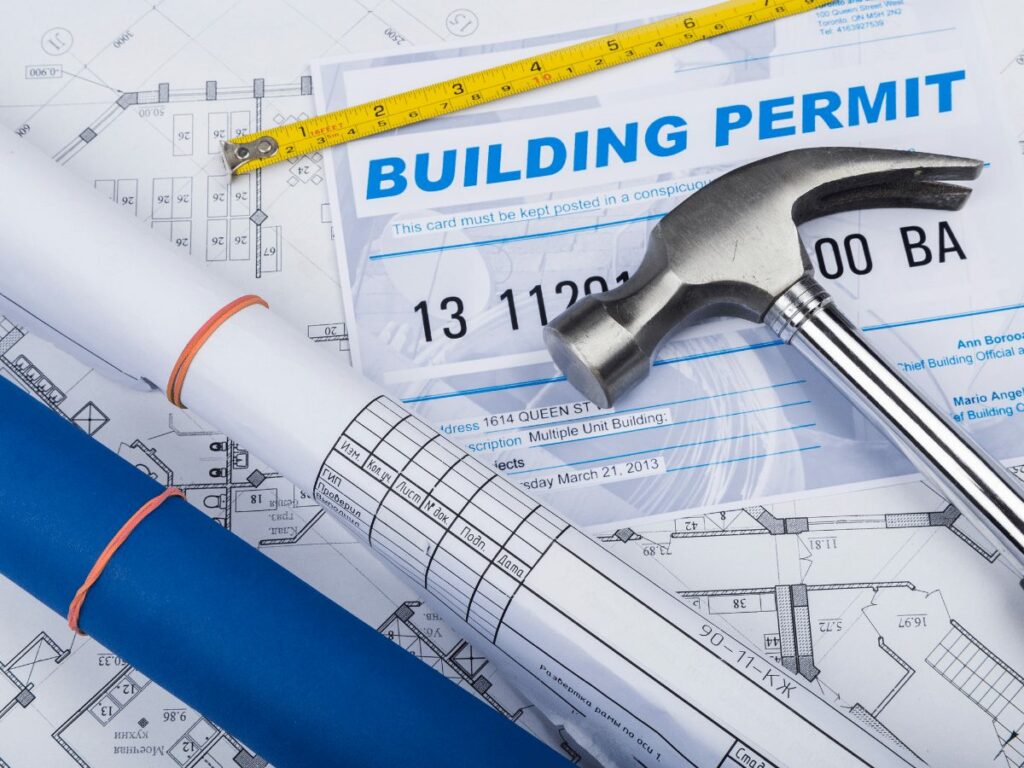
Health and Safety Permits
Depending on the local regulations, gyms may require health and safety permits. These permissions ensure that the facility adheres to public health standards and can provide a safe environment for clients. I personally make sure that we’re always on top of any necessary permits and regulations, because your safety and health is my top priority.
Sign Permit
If the gym plans to advertise with outdoor signs, it may need a sign permit. Local authorities require this to regulate the size, location, and sometimes the lighting and maintenance of signs.
Sales Tax License
If selling merchandise or other goods within the gym, a sales tax license may be needed. This allows the collection of sales tax on goods sold, which is subsequently paid to the government.
6. Insurance
Having appropriate insurance coverage, which is essential to know for those wondering how to become a gym owner, is not only a smart business move but is also often a legal necessity. This helps shield the business from potential losses and liabilities. Here’s a look into various insurance types relevant to gym owners:

General Liability Insurance
General liability insurance provides coverage against claims resulting from injuries and property damage occurring on gym premises. It’s essential as it provides a safety net against unforeseen accidents that could otherwise result in crippling financial losses.
Professional Liability Insurance
Also known as Errors and Omissions Insurance, this policy protects the gym against claims of negligence related to professional services offered. This coverage is crucial for gyms offering personal training or specialized classes. I insist on having this policy in place to ensure peace of mind for both our clients and staff, emphasizing our dedication to a professional and accountable environment.
Workers’ Compensation Insurance
This insurance provides coverage for medical costs and wage replacement if employees get injured or ill due to their job. In a past incident, having workers’ compensation insurance proved invaluable when a trainer sustained a minor injury during a class.
Property Insurance
Property insurance protects the gym’s physical assets, such as gym equipment, buildings, and fixtures, against loss or damage from a variety of causes. Taking out property insurance is just one of the ways I commit to protecting my assets, to ensure a stable, uninterrupted fitness experience for my members.
Business Interruption Insurance
This type of insurance provides coverage for loss of income resulting from a fire or other catastrophe that disrupts the operation of the business.
7. Qualified Staff
Establishing a successful gym necessitates the assembly of a highly qualified team. A knowledgeable and motivated staff forms the backbone of any fitness venture, providing a range of indispensable services, from client instruction to equipment maintenance. The advantages of having a trained, competent staff cannot be understated. Here are the following:

Increased Member Retention
At the heart of a successful gym is the ability to keep members coming back, and a qualified team plays a crucial role in that. According to Glofox, having quality staff, is having a passionate team with their work and committed to delivering outstanding results. Experienced staff understand the unique needs and aspirations of gym-goers, crafting customized workouts and offering thoughtful guidance.
Optimized Safety
Qualified staff are critical for ensuring the safety of gym users. They are trained to supervise proper equipment usage, preventing potential accidents and injuries. In addition, a trained team is competent in emergency response procedures, crucial in a fitness setting.
Positive Image and Reputation
An experienced team not only provides an exceptional service but also boosts the image and reputation of the gym. Knowledgeable trainers become brand ambassadors, influencing the perceptions of existing members and attracting new ones. As someone who understands the value of a strong, positive image, I’m committed to providing an exceptional team of trainers who personify our dedication to health and fitness.
Increased Revenue
Effective staff promote services and programs, upselling them to the existing clientele and attracting new members, hence driving up the revenue. From my perspective, it’s not just about increasing revenue, but about creating an environment where members feel valued and willing to invest in our diverse offerings.
Efficient Operations
Having a capable team ensures the smooth running of gym operations. From managing bookings to maintaining equipment, experienced staff ensure that gym operations run like clockwork, creating a seamless experience for members and minimizing downtime.
8. Gym Management Software
In an increasingly digital world, leveraging technology is paramount for a gym’s success. A critical part of this is integrating gym management software into the business operations. This technology simplifies and automates tasks, streamlines operations, and enhances member engagement. Below are five exemplary gym management software to consider.
Virtuagym
Virtuagym is a comprehensive gym management software offering an all-in-one solution. It enables task automation, online booking and payments, and member engagement through personalized nutrition and workout plans. I vouch for this software’s capabilities because it serve a better program, tailoring the gym’s offerings to the specific needs and preferences.
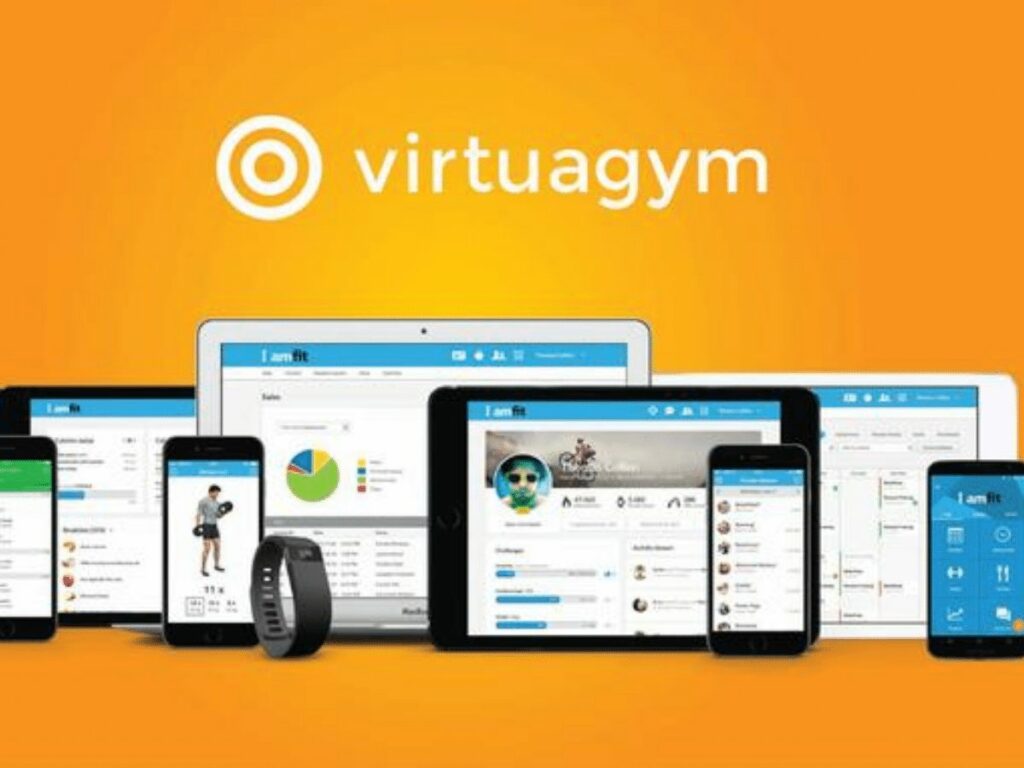
Glofox
Glofox offers robust features for managing gym schedules, memberships, and payments. It also offers CRM capabilities, enabling gyms to better manage member relationships and improve retention.

PushPress
PushPress excels in streamlining gym operations, from billing and scheduling to check-ins. It offers a user-friendly interface, making it easy for both staff and members to use. As a seasoned gym owner, the efficiency and convenience that gym management software like PushPress bring are invaluable.
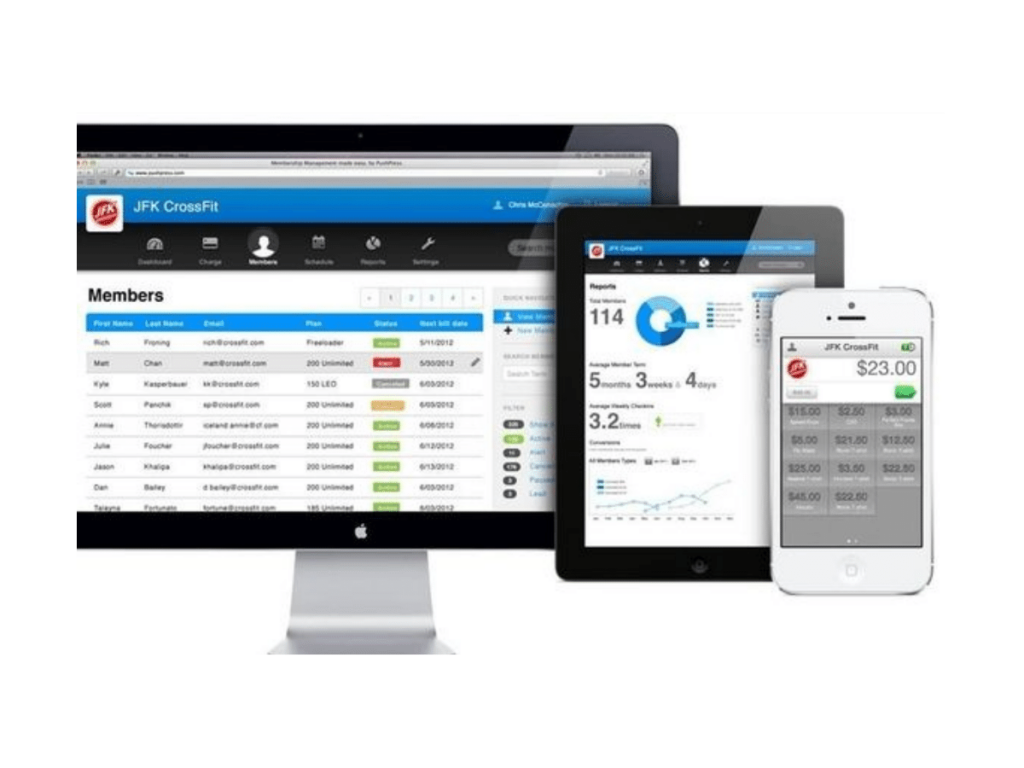
Exercise.com
Touted as the best gym management software by some, Exercise.com offers an all-in-one platform to run a gym or fitness studio. This software brings together functionality from many different management areas, offering features such as gym check-ins, appointment booking, payment processing, workout management, custom-branded gym apps, and fitness assessments.
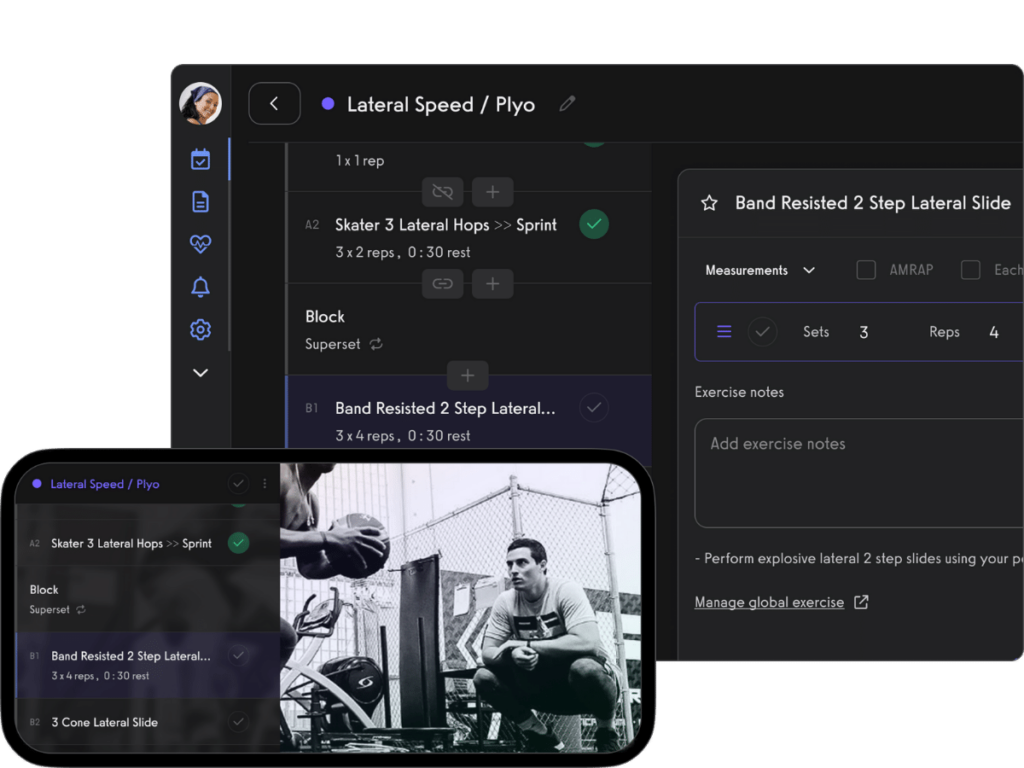
GymMaster
A comprehensive gym management solution that integrates various aspects of gym administration into one system, including membership management, administrative tasks, and automated marketing. With built-in bluetooth door access, GymMaster replaces whole software stack and has been enjoyed by thousands of gyms in over 90 countries.

9. Marketing Materials
The importance of marketing in a fitness business, and getting information on opening a gym, cannot be overstated, especially when considering resources like a gym owners association. It provides a means of communication between the gym and prospective members, offering crucial information about the services, and promoting the brand. A well-rounded marketing strategy should consist of varied materials to ensure maximum reach and engagement. Here are the following:
Website
A professional, user-friendly website is essential as it is often the first or second point of contact for potential members. The website should be easy to navigate, informative about the gym’s location, hours, facilities, and should also have a strong presence in search engines. Additionally, it could include an API for an existing client portal for members to sign-up, make payments, and book personal training or classes.
The table below highlights the key elements of a professional and user-friendly gym website, emphasizing the importance of intuitive design, informative content, search engine optimization, client portal integration, and visual appeal. Discover how these elements contribute to a positive online presence and attract potential members to your gym.
| Website Elements | Description |
| User-Friendly Design | A well-designed website with intuitive navigation and clear layout enhances the user experience, making it easy for potential members to find the information they need and navigate through the site. |
| Informative Content | The website should provide comprehensive information about the gym’s location, hours of operation, facilities, amenities, classes offered, personal training services, and any other relevant details to help potential members make informed decisions. |
| Search Engine Optimization | Implementing search engine optimization (SEO) techniques improves the website’s visibility in search engine results, allowing potential members to find the gym website more easily when searching for fitness-related keywords or local gyms. |
| Responsive and Mobile-Friendly | A responsive design ensures that the website adapts and functions well on various devices, including desktops, tablets, and smartphones, providing a seamless browsing experience for users regardless of the device they are using. |
| Client Portal Integration | Integrating an API for an existing client portal enables members to conveniently sign up for memberships, make payments, and book personal training sessions or classes through the website, streamlining the member management process. |
| Visual Appeal | A visually appealing website with high-quality images, engaging graphics, and consistent branding creates a positive first impression, conveying professionalism and attracting potential members to explore further. |
| Clear Calls-to-Action | Effective calls-to-action (CTAs) strategically placed throughout the website encourage visitors to take desired actions, such as signing up for a free trial, contacting the gym for inquiries, or joining as a member. |
| Testimonials and Reviews | Including testimonials and reviews from satisfied members on the website builds trust and credibility, providing social proof of the gym’s quality and success in helping individuals achieve their fitness goals. |
| Easy Contact Information | Clear and easily accessible contact information, including phone numbers, email addresses, and social media links, allows potential members to reach out to the gym with any inquiries or concerns. |
Social Media Content
The use of social media is an essential marketing tool for gyms. Platforms such as Instagram, Facebook, Twitter, and LinkedIn can be utilized to share engaging content such as workout videos, member success stories, fitness tips, and special promotions. These platforms can also be used to interact directly with members and potential customers, creating a sense of community around the gym.
Email Newsletters
Email newsletters can be a great way to stay in touch with members and prospects, providing updates about classes, new facilities, promotions, and fitness tips. It’s a cost-effective way to reach a large audience and drive engagement, keeping the gym top-of-mind for subscribers. I personally believe in the power of communication, newsletters not only gives update but aim to inspire and motivate clients fitness journey.
Promotional Flyers and Posters
Despite the increasing digitalization of marketing, traditional printed materials like flyers and posters still play a role, especially for local businesses like gyms. These materials can be distributed in the local area or placed in strategic locations within the gym itself to advertise new classes, promotions, or events.
SEO-Optimized Blog Posts
Content marketing in the form of blog posts on the gym’s website is a great way to attract organic search traffic. Topics could include workout tips, nutrition advice, or explanations of different types of exercise. This material helps establish the gym as an authority in the fitness field and attract potential members who are seeking this kind of information.
Loyalty Program Brochures
These programs could offer incentives for regular attendance, referrals, or long-term membership. Brochures that explain the details and benefits of the loyalty program can be distributed both in the gym and online. From my experience, loyalty programs truly help us show our appreciation for your commitment to fitness and our facility.
Conclusion
Opening a gym involves thorough planning, securing licenses, choosing a niche, and carefully selecting the right equipment. Your fitness venture is not only a business, but a community you are creating to share in the joy of health and well-being.
We understand the unique challenges of setting up a gym and are committed to supporting you every step of the way. If you have any questions about our products or need advice on equipping your space, don’t hesitate to contact us. Because at Yanre Fitness, we’re more than a gym equipment manufacturer – we’re a partner in your fitness journey.
Related articles:








